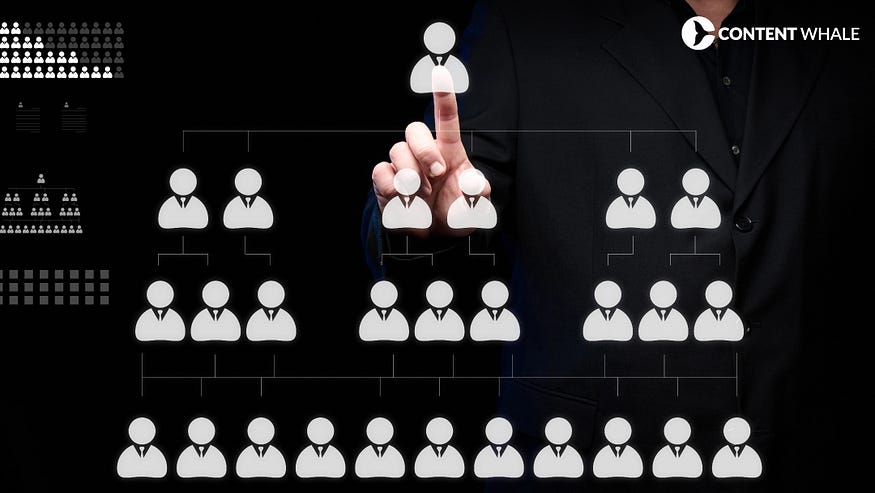Imagine this: according to a study by HubSpot, companies who exceed their revenue goals are 7.4 times more likely to segment their database by buyer personas than those who missed revenue goals.
This statistic alone underscores the immense power of buyer personas, especially for startups striving to carve out their niche in competitive markets. Buyer personas are not just fictional characters; they are detailed representations of your ideal customers, crafted from real data and insights.
They guide everything from product development to marketing strategies, ensuring that your startup speaks directly to those who matter most — your customers. In this blog, we’ll dive into the world of buyer personas, learning from successful brands, how they crafted theirs and how you can do the same for your startup.
The Power of Buyer Personas in Shaping Startups

Understanding your target audience is the cornerstone of any successful startup. Buyer personas take this understanding to a new level, offering a detailed and nuanced view of your ideal customers. These semi-fictional characters, crafted from market research and real data, serve as a guiding star for your business strategies.
The Impact of Buyer Personas on Marketing and Product Development
Buyer personas influence how you communicate your product or service. They help you tailor your messaging to resonate with your target audience, increasing the efficacy of your marketing efforts. For instance, a persona focused on young professionals might lead you to emphasize convenience and innovation in your marketing campaigns.
Moreover, these personas play a crucial role in product development. By understanding the needs, pain points, and preferences of your target audience, you can design products that truly resonate with them. This customer-centric approach often results in higher customer satisfaction and loyalty.
Connecting Buyer Personas to Customer Satisfaction
The correlation between well-defined buyer personas and customer satisfaction is undeniable. A study by Cintell found that companies who exceed lead and revenue goals are more than twice as likely to create personas based on market research than those who missed these goals. This research-based approach ensures that your personas accurately reflect your target audience, leading to more effective marketing strategies and product designs.
Gathering Insights to Build Buyer Personas

The foundation of any effective buyer persona is accurate and relevant data. For startups, this means diving into both demographic and psychographic information to create a well-rounded profile of your potential customers.
Collecting Demographic Data
Demographics provide the basic structure of your buyer personas. This includes age, gender, income, education, and occupation. These details are crucial as they give a general picture of who your customers are. Surveys, interviews, and analysis of existing customer data through tools such as Google Analytics can be excellent sources for this information.
Understanding Psychographics
While demographics tell you who your customers are, psychographics tell you why they buy. This includes personality, values, attitudes, interests, and lifestyles. Understanding these aspects helps in creating messaging and products that resonate on a deeper level with your audience. Tools like Google Analytics and social media insights can be invaluable for gathering this kind of data.
Identifying Customer Pain Points and Motivations
Knowing your customers’ challenges and what motivates them is key to developing products and services that provide real solutions. Conducting one-on-one interviews, engaging in social listening, and analyzing customer feedback can reveal these critical insights.
Creating Effective Buyer Personas: A Step-by-Step Guide

Developing buyer personas is a systematic process that involves research, analysis, and a bit of creativity. Here’s how you can do it:
Step 1: Conducting Market Research
The first step in creating buyer personas is to gather as much information as possible about your potential customers. Utilize tools like SurveyMonkey, Typeform or Google Forms to conduct surveys to understand your audience’s demographics, preferences, and pain points. Interviews, both with current customers and prospects, can also yield valuable insights.
Step 2: Analyzing Data
Once you have your data, the next step is to analyze it to identify patterns and common characteristics. Look for trends in your audience’s behaviour, preferences, and feedback. This analysis will form the basis of your buyer personas.
Step 3: Building the Persona
Now, take the insights from your research and start building your personas. Detail each persona with specific characteristics such as age, occupation, interests, and lifestyle. Also include their goals, challenges, and what solutions they might be seeking from your product or service. For a more comprehensive understanding, refer to HubSpot’s Guide on Creating Buyer Personas.
Step 4: Naming and Humanizing the Persona
Give each persona a name and a face. This step is crucial as it helps your team think of them as real people, making it easier to tailor your products and marketing efforts to meet their specific needs.
Step 5: Applying and Testing Your Personas
Finally, apply your personas to your marketing strategies and product development. Monitor and measure the effectiveness of this approach, and be prepared to make adjustments based on real-world feedback and performance metrics.
In-Depth Case Studies of Buyer Persona Usage

Seventeen Magazine: Adapting to the Teenage Pulse
Persona Creation: Seventeen Magazine’s journey began in the 1950s with a persona named “Teena”, sculpted from surveys among teenage girls and their mothers. This persona echoed the real worries and interests of high school girls of that era.
Data Collection: Their approach was rooted in extensive survey data, ensuring an accurate reflection of their readership.
Marketing Application: Over the years, Seventeen continuously adapted Teena to mirror the evolving nature of teenage concerns, effectively guiding their content strategy to stay relatable and engaging.
Apple: Broadening Horizons Beyond the Consumer
Persona Expansion: Apple, initially focusing on the general consumer, astutely expanded its persona base to include ‘the business professional.’
Data Collection: This shift likely involved analyzing customer usage patterns and market demands.
Marketing Application: The inclusion of this new persona helped Apple tailor its products and marketing efforts to resonate with the efficiency and effectiveness sought by professionals, leading to a broader appeal and market penetration.
Zipcar: Capturing the Millennial Urban Dweller
Persona Focus: Zipcar’s target persona was the environmentally conscious, convenience-seeking “millennial urban dweller.”
Data Collection: This persona was probably developed through market research and social media trends analysis.
Marketing Application: Their marketing strategies and social media content were designed to appeal to this demographic’s lifestyle preferences, emphasizing sustainability and ease of use.
In these case studies, we see a blend of strategic foresight and keen market understanding. Each brand’s commitment to continuously evolving its buyer personas demonstrates the power of a well-executed, data-driven approach in marketing.
Keeping Buyer Personas Relevant

In the dynamic world of business, buyer personas are not a ‘set and forget’ tool. They require regular updates to stay aligned with evolving market trends and customer preferences.
Periodic Review and Updating
Why It’s Needed: As market dynamics shift, so do the needs and behaviours of your customers. Regularly revisiting your buyer personas ensures that your marketing strategies and product development remain relevant and effective.
How to Do It: This can involve analyzing new market research, customer feedback, and sales data.
Staying in Tune with Market Trends
Staying Informed: Keeping abreast of industry trends and changes in consumer behaviour is crucial. This might include subscribing to industry reports, signing up for keyword alerts, or looking at historical search data using tools such as Google Alerts or Google Trends.
Adapting Strategies: Use these insights to tweak your personas, ensuring they accurately reflect current customer profiles.
Incorporating Customer Feedback
Listening to Your Audience: Customer feedback is a goldmine for persona development. Regularly gather and analyze feedback from surveys, social media, and customer service interactions.
Actionable Changes: Use this feedback to refine your personas, making them more representative of your actual customer base.
Utilizing Advanced Tools and Analytics
Leveraging Technology: Advanced analytics tools can provide deeper insights into customer behaviours and preferences. Tools like Google Analytics can be instrumental in this process.
Data-Driven Refinements: Use the data from these tools to make informed adjustments to your personas.

We’ve covered a lot in this article! From the importance of buyer personas for startups to practical steps for creating them.
We’ve walked through a detailed, step-by-step guide to creating effective buyer personas, utilizing real-world examples from successful brands like Seventeen Magazine, Apple, and Zipcar.
We also discussed the importance of keeping these personas up-to-date in response to changing market trends and customer feedback. Armed with this knowledge, you’re now better equipped to create and refine personas that truly resonate with your target audience.
Ready to elevate your startup’s marketing approach? Dive into our comprehensive content marketing guide for startup founders. It’s packed with strategies and tips to help you connect with your audience effectively. Discover how to harness the power of content marketing and take your startup to new heights. Don’t wait — explore the guide now and start making a lasting impact with your marketing efforts! 🚀





